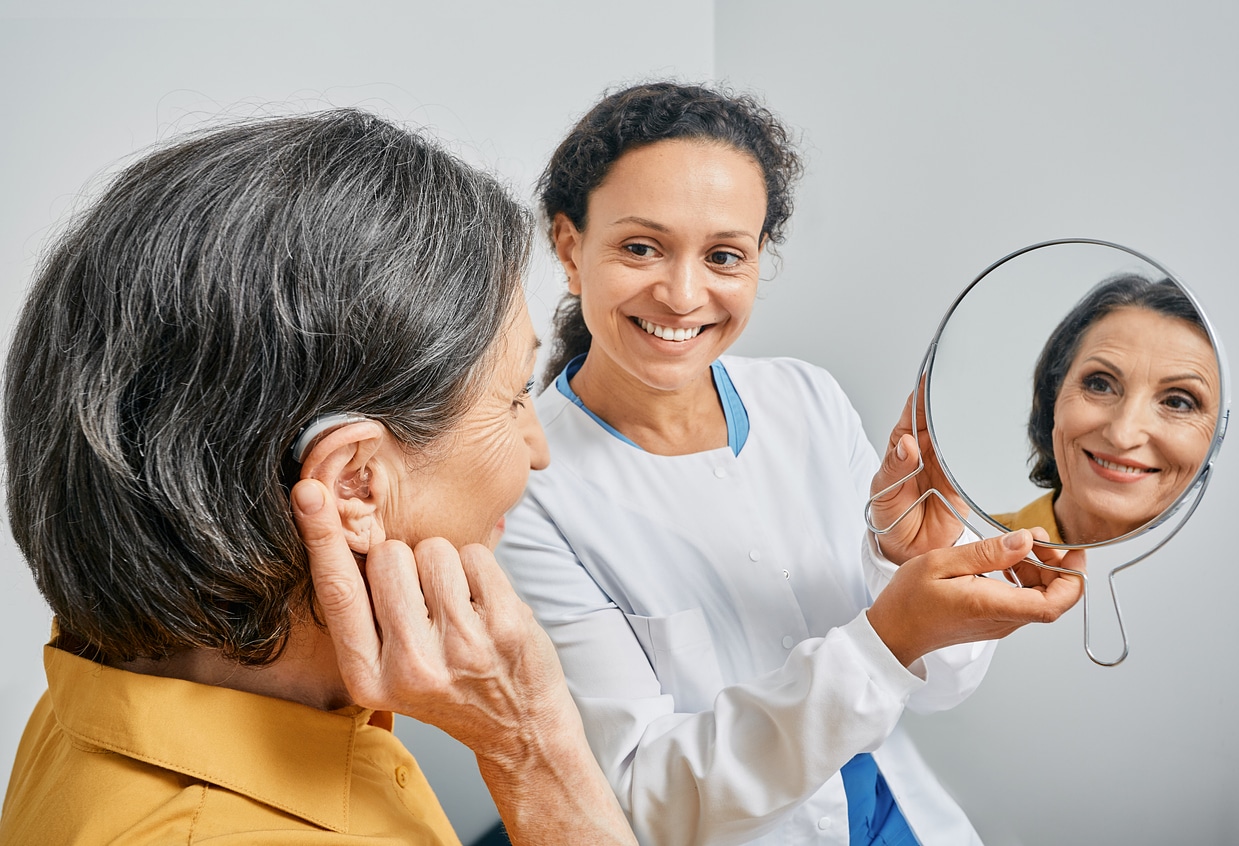Congratulations on your new hearing aids! It’s exciting to connect to the world of sound and improve communication and well-being. We know that in this new chapter, there are a lot of steps and a lot of information to digest, so we wanted to break down one such step, explain what to expect and give you the confidence and comfort you need as we embark on this journey together. So, let’s talk about your initial hearing aid fitting appointment.

When Is My Hearing Aid Fitting?
Your hearing aid fitting occurs a few weeks after your hearing test. Based on the results of your hearing test and your initial consultation with the audiologist, your audiologist ordered hearing aids for you from the manufacturer. Once the hearing aids are delivered to the clinic, you’ll be called back for your fitting appointment. After the fitting appointment, you’ll get to take your new hearing aids home.
What Do I Need to Know Before My Hearing Aid Fitting Appointment?
Be aware that the appointment can last about an hour, sometimes up to two hours, and it will require your active participation during that time. Prepare that day for an energetic day filled with learning, questions and answers, providing feedback and listening intently.
At this appointment, we’ll cover a lot of information about your new hearing aids and how to care for them. We recommend you bring a notebook or take notes on your phone to make sure you capture all the information. You can also ask a family member or friend to come with you to help remember information and provide support!
What Will Happen During the Hearing Aid Fitting?
Here is a step-by-step guide to what will happen at the appointment.
- Initial Programming. Your audiologist may do this with you, or they may do it before you arrive. They will perform the initial programming of the hearing aids according to the audiogram from your hearing test, which will align the hearing aids with your hearing needs.
- Initial fitting. This involves putting the hearing aids in your ears and ensuring they fit and are comfortable. Your audiologist will select the right parts for a secure fit that seals the ear properly and adjust the earpiece and tubing until they feel snug in your ears. If you have custom molds, the audiologist will check their fit. The goal is to verify that the hearing aids are secure, seal the ear and are comfortable.
- Real ear measurement. This step confirms that your hearing aid settings are providing sounds at the correct amplification. A small microphone will be gently inserted into your ear canal to measure the volume of sound near your eardrums. The audiologist will then place your hearing aids into your ears, with the microphone still inserted, and play some test sounds. Some fine-tuning may occur if adjustments are needed. This should not be uncomfortable—maybe tickle a little—so please speak up if you feel discomfort. This test is critical to ensuring that your hearing aids deliver sound the way they ought to.
- Hearing aid care and education. Once the hearing aid is set up, your audiologist will go over instructions on how to insert and remove them, clean them, change the batteries or charge them, use any accessories and so on. This is where the notebook or a backup person can come in handy: there is a lot of information.
After Your Hearing Aid Fitting Appointment
You’ll walk out of the clinic with your brand-new hearing aids! Wear them as often as you can in the following days, even if it’s just for a few hours a day. The more you wear them initially, the easier it will be to adapt in the long run.
Your audiologist will probably schedule a follow-up appointment two to four weeks after the initial fitting. The goal of this visit is to evaluate how well you’re adapting to your hearing aids and discuss any necessary adjustments to settings. We at Lakelands ENT look forward to going on this journey with you. Please call if you have any questions or need more information.